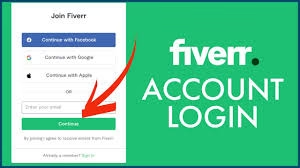PBN Links SEO Search engine optimization (SEO) is a constantly evolving field. As competition increases and Google refines its algorithms, website owners are continuously exploring ways to improve rankings. Among the more controversial tactics is the use of PBN links—Private Blog Network backlinks. These links are often discussed in hushed tones, viewed as either a powerful SEO shortcut or a ticking time bomb for your website.
But what exactly are PBN links? Do they still work in 2025? Are they worth the risk?
This guide explores the full spectrum of PBN links in SEO: their mechanics, pros and cons, real-world strategies, and how to use them (if at all) effectively in the current search landscape.
What Are PBN Links?
PBN stands for Private Blog Network. It’s a network of authoritative websites created primarily to provide backlinks to a target website—often called a “money site”—in order to manipulate search engine rankings.
These websites are typically built using expired domains that already have backlinks and authority in the eyes of Google. Once set up, these sites link out to your main website using specific anchor texts and URL placements to influence rankings.
Since these links are not earned naturally and are created solely for SEO benefit, they fall into the black hat or gray hat category of SEO tactics.
Why SEOs Use PBN Links
Despite the risks, many SEOs, affiliate marketers, and digital entrepreneurs still use PBN links. Here’s why:
1. Faster Ranking Improvements
When used correctly, PBN links can rapidly boost a site’s position in search engine results.
2. Full Control Over Links
Unlike guest posting or HARO outreach, you control everything: anchor text, placement, context, and timing.
3. Bypass Traditional Outreach
Traditional link-building can be time-consuming. PBNs skip the “please link to me” emails and deliver results on your timeline.
4. Affordable at Scale
Once set up, PBN links can be more cost-effective than ongoing outreach or link buying, especially for long-term campaigns.
How a PBN Works
Here’s a breakdown of how a Private Blog Network functions:
- Acquire Expired Domains: Find domains that once had legitimate websites with quality backlinks.
- Rebuild Sites: Recreate the websites with new content while preserving the look and feel of a real site.
- Host Separately: Each site is hosted on different IPs or hosting providers to avoid footprints.
- Link Out Strategically: Links to the money site are added to posts or pages using varied anchor texts.
- Manage and Maintain: Keep each site updated and indexed to preserve the SEO value.
When done well, the network appears organic and unrelated, making it difficult for Google to detect.
The Benefits of PBN Links
1. Higher Search Engine Rankings
PBN links can give your site the authority boost it needs to outrank competitors—especially in high-competition niches.
2. Quick Results
While white-hat SEO can take months, PBNs can drive noticeable movement in as little as 2–4 weeks.
3. Niche Relevance
PBN sites can be tailored to specific industries, helping you build topic-relevant links.
4. Reusability
Once you own a PBN site, you can link to multiple money sites, test anchor variations, or even monetize the PBN itself.
The Risks of PBN Links
Despite the benefits, PBN links are not without serious risks:
1. Google Penalties
PBNs violate Google’s Webmaster Guidelines. If detected, you may face manual or algorithmic penalties, which can deindex your site or drop your rankings overnight.
2. Loss of Investment
Buying or building a PBN can be expensive. If the network is discovered or deindexed, you lose all value.
3. Ethical Concerns
Many in the SEO community argue that PBNs undermine the integrity of organic rankings.
4. Time-Intensive Management
Each PBN site must be updated regularly, hosted separately, and maintained like a real site—this can become overwhelming at scale.
Google’s Stand on PBNs
Google explicitly prohibits manipulative link schemes. Here’s what the official guidelines say:
“Any links intended to manipulate PageRank or a site’s ranking in Google search results may be considered part of a link scheme and a violation of Google’s Webmaster Guidelines.”
Google has developed sophisticated methods to identify PBNs:
- IP footprint detection
- Pattern recognition in anchor text
- WHOIS data cross-referencing
- Linking pattern anomalies
- Content duplication and thin pages
In many cases, it’s not if a PBN gets caught—it’s when.
Buying PBN Links: What You Need to Know
If you’re considering buying PBN links instead of building them yourself, consider the following:
Vet the Seller Carefully
- Is the site indexed in Google?
- What are the domain metrics (DA, DR, TF, CF)?
- Does it get organic traffic?
- Is the content readable and original?
- How many outbound links are on the site?
Watch Out for These Red Flags
- Generic or spun content
- Excessive outbound links on a single page
- Extremely low prices
- No niche relevance
- “Package deals” with hundreds of links
Pro Tip: Quality PBN links are never cheap. If the offer seems too good to be true, it probably is.
Metrics That Matter in a PBN
When evaluating a PBN site, focus on these key SEO metrics:
- Domain Rating (DR) or Domain Authority (DA): Measures domain-level strength.
- Referring Domains: A healthy domain should have 50+ referring domains.
- Trust Flow (TF): Indicates the trustworthiness of a site’s backlinks.
- Topical Trust Flow: Shows the niche or category of the links.
- Organic Traffic: If the site gets search traffic, it’s likely indexed and trusted.
How to Build Your Own PBN (Step-by-Step)
Building a PBN is not easy, but it gives you full control and better long-term results.
Step 1: Find Expired Domains
Use tools like:
- ExpiredDomains.net
- DomCop
- SpamZilla
Focus on domains with good backlinks and minimal spam history.
Step 2: Register and Host Separately
Use different registrars and hosting providers to avoid patterns. Consider using:
- Shared hosting
- Reseller accounts
- Cloud providers (AWS, DigitalOcean, etc.)
Step 3: Create Realistic Websites
Use unique WordPress themes, logos, and layouts. Each site should feel like a real business or blog.
Step 4: Add Quality Content
Publish 5–10 pages of content before linking out. Avoid AI-generated fluff.
Step 5: Link Out Naturally
Include internal links, outbound links to authority sites, and your money site. Don’t over-optimize anchor texts.
Step 6: Ongoing Maintenance
Update content monthly, monitor uptime, and rotate themes occasionally.
Footprint Avoidance: The Secret to Longevity
The biggest threat to a PBN is detection via footprints. To reduce the risk:
- Use different IP addresses and hosting.
- Use different CMS themes and plugins.
- Avoid repeating anchor text patterns.
- Don’t interlink PBN sites.
- Use unique content on each site.
Even with careful planning, it’s important to accept that PBNs carry inherent risk.
Real-Life PBN Case Studies
Case Study 1: Affiliate SEO Boost
A niche affiliate site received 12 PBN links over 3 months. Rankings moved from page 5 to page 1 for multiple terms, increasing revenue by 300%.
Case Study 2: E-Commerce Penalty
An e-commerce site bought 50 cheap PBN links from Fiverr. Two months later, it received a manual action, and its traffic dropped 90%.
Case Study 3: Sustainable Hybrid Strategy
A marketing agency used 10 high-quality PBN links in combination with HARO and guest posts. The site grew steadily without penalties and dominated the SERPs in 9 months.
PBNs vs. Other Link Building Methods
| Method | Risk | Cost | Speed | Control | Longevity |
|---|---|---|---|---|---|
| PBN Links | High | Medium-High | Fast | Full | Medium |
| Guest Posts | Low | Medium | Moderate | Partial | High |
| HARO Links | Low | Low | Slow | Low | High |
| Niche Edits | Medium | Medium | Moderate | Partial | High |
| Directory Links | Low | Low | Slow | Low | Medium |
Tips for Safe PBN Usage in 2025
- Keep Your Network Small and Private Don’t sell links or advertise your network—stay under the radar.
- Mix Link Sources Never rely solely on PBNs. Add white-hat links to dilute risk.
- Avoid Patterned Anchor Text Vary anchors to look natural (branded, naked, generic).
- Don’t Rush Space out your link placements over time.
- Audit Your PBN Regularly Check indexing, content quality, uptime, and backlink health.
Should You Use PBN Links in 2025?
That depends on your goals, risk tolerance, and niche.
Use PBNs if:
- You’re targeting ultra-competitive keywords.
- You have the resources and skill to manage them.
- You’re okay with short-to-mid term gains and potential penalties.
Avoid PBNs if:
- You run a brand-focused or long-term business.
- You can’t afford a penalty.
- You prefer playing within Google’s rules.
Final Thoughts
PBN links remain a powerful yet risky SEO strategy. In 2025, they’re still effective—but only for those who know how to build and use them without leaving footprints.
If you’re considering PBNs:
- Do it right or don’t do it at all.
- Invest in quality over quantity.
- Always diversify your backlink profile.
PBNs aren’t magic—they’re tools. Used correctly, they can lift a site to the top. Used recklessly, they can bury it for good.
Want help analyzing or building a PBN strategy? I can help you assess risk, source domains, or craft a hybrid SEO plan that fits your goals. Just let me know!
Would you like this turned into a downloadable PDF, formatted for your blog, or rewritten in a different tone?







Thanks for sharing. I read many of your blog posts, cool, your blog is very good.